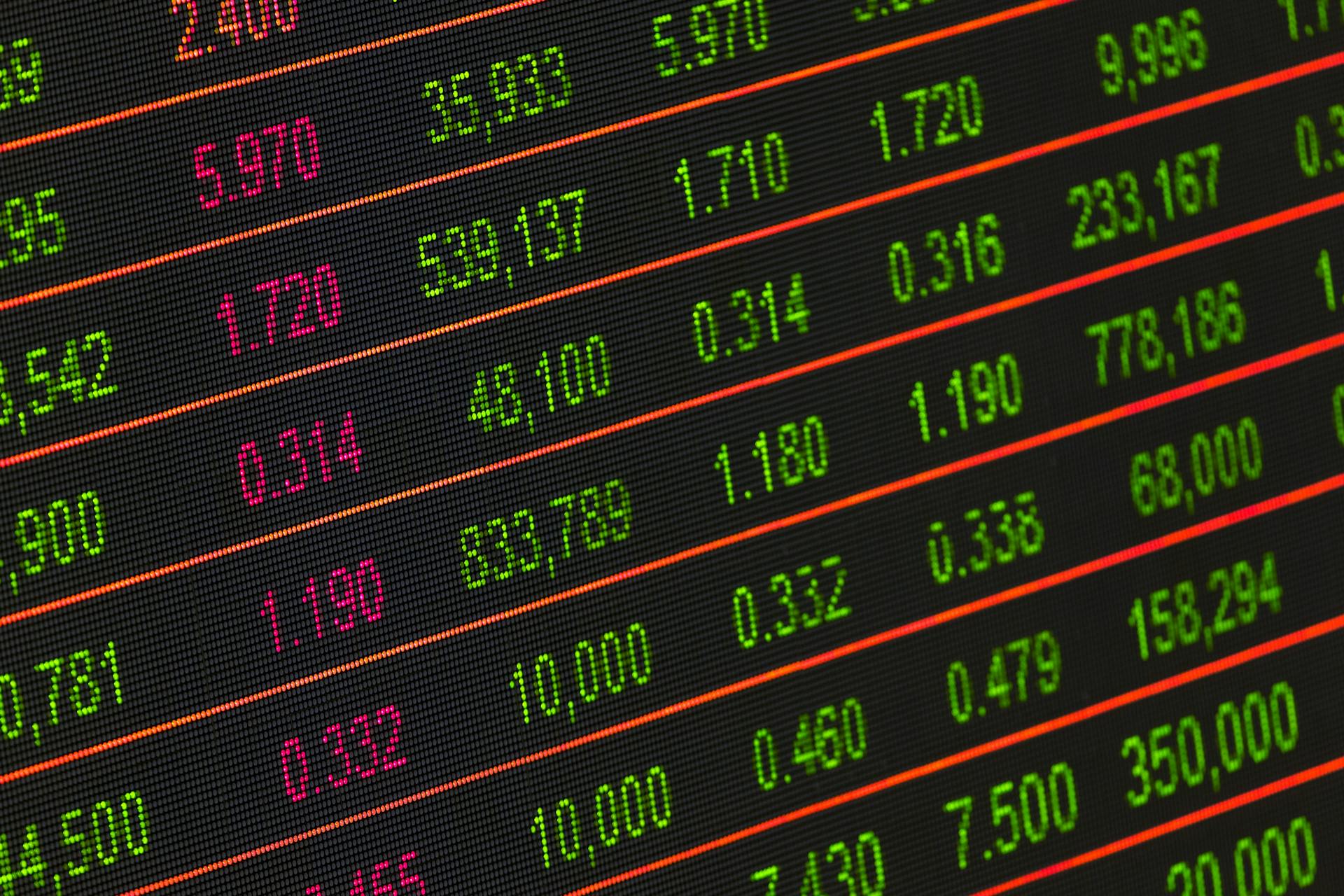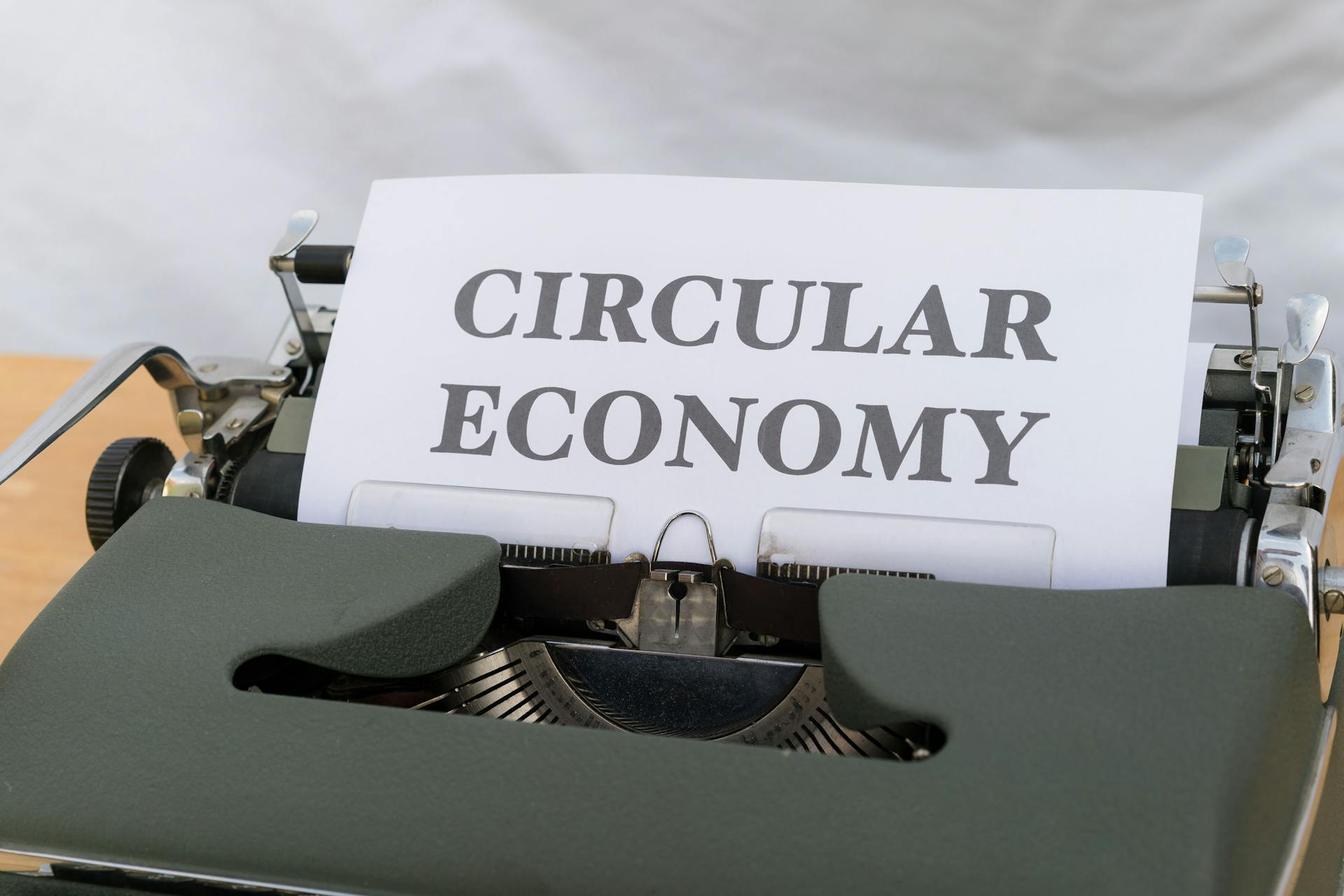
A market stock order is a type of order that allows you to buy or sell a stock at the current market price. This means you won't specify a particular price, and the order will be executed at the best available price.
The market stock order is often used when you want to buy or sell a stock quickly, as it's usually filled immediately. In fact, it's one of the most common types of orders used by investors.
The key thing to know about market stock orders is that they're executed at the prevailing market price, which can fluctuate rapidly. This means the price you get may be higher or lower than the price you saw when you placed the order.
Take a look at this: Market Price per Share of Common Stock
Explained
Market orders are purchase and sale decisions made by an investor, not just associated with the stock market.
In a financial market, if an investor buys or sells securities while the market is in session, it's referred to as a market order. This can include buying or selling bonds, currency, crypto, or other financial products.
Curious to learn more? Check out: What Is a Private Investor
Investors can place buy or sell orders only during market hours.
A buy or sell market order is an instruction to buy or sell a stock at the best available price, which is usually executed immediately.
Pre-buy or pre-sell orders allow an investor to place an order minutes before the market opens, and are executed immediately as soon as the market session begins.
If a buy or sell order is placed after closing, it will be executed the next business day.
Market orders execute a purchase or sale at the prevailing price, unlike limit orders which are instructions to sell or buy an asset at a specific price.
Every stock quote has three elements – the highest bid, the lowest bid, and the last trade price.
You might like: Pre Market Trading Stocks
Order Types
You can place two main types of orders: limit orders and market orders. Limit orders allow you to buy or sell shares at a pre-designated price or better.
Additional reading: Stock Limit Order
A limit order is like saying, "I'll buy shares of Microsoft at $123 or less." You can set the duration for the order to expire at the end of the day, week, month, or a year later. The order is automatic, so you don't need to be present when it's filled.
Market orders, on the other hand, are like a "buy it now" button. They say, "Buy me shares now at whatever the best price is available." If you use a market order to buy stock, you'll get your shares at (or close to) the ASK price, which is the lowest price someone is willing to sell shares for at that moment.
Examples
Let's look at some examples to understand order types better.
Gerrard placed a sell order for Apple Inc. stock when it was trading at $257.35, but the price dropped by $0.90 before the order was executed, resulting in a sale at $256.45.
You can place a buy limit order with a limit price, like Gerrard did with Apple Inc., to buy a stock at a specific price or lower.
If you own a stock trading at $12 a share, you can place a sell limit order with a limit price of $13 to sell the stock at or above that price.
Gerrard's initial investment of $135.45 became $2573.55 after nine months, but he still ended up selling at a lower price due to the delayed execution of his sell order.
You can use limit orders to buy or sell a stock at a specific price, giving you more control over your trades.
Types of Orders
Market orders are like a "buy it now" button on Amazon, where you buy or sell shares at the current market price without setting a specific price.
Limit orders, on the other hand, allow you to buy or sell shares at a pre-designated price or better. This means you can set a specific price and the order will only execute if the market price reaches or falls below that price.
A stop-limit order combines a stop price and a limit price. The stop price triggers the order, and the limit price sets the maximum or minimum price you're willing to pay for the shares.
There are two types of stop orders: buy stop orders and sell stop orders. Buy stop orders are entered at a price above the current market price, while sell stop orders are entered at a price below the current market price.
A stop order can be triggered by a temporary market movement, which may cause your execution price to be significantly different from your stop price.
The following table summarizes the main differences between market and limit orders:
Conditional orders allow traders to pre-set their entry and exit strategies, and come in multiple flavors including contingent, multi-contingent, one-triggers-the-other (OTO), one-cancels-the-other (OCO), and one-triggers-a-one-cancels-the-other (OTOCO).
Broker/Dealer
A broker-dealer is a licensed individual or firm that executes orders to buy or sell securities for the public.
They usually get a commission for doing so, which can be a percentage of the transaction or a flat fee.
Broker-dealers act as intermediaries between buyers and sellers, matching orders and facilitating trades.
Their role is crucial in the securities market, providing a platform for investors to buy and sell securities.
A broker-dealer's primary responsibility is to act in the best interest of their clients, executing trades that meet their needs and goals.
Related reading: Open Online Brokerage Account
ETF
ETFs are a type of investment that combines characteristics of mutual funds and individual stocks. They can be traded throughout the day, which is a big advantage for investors who want to quickly adjust their portfolio.
ETFs often have lower expense ratios compared to mutual funds, which means you'll save money on fees. This is a significant benefit for long-term investors who want to keep more of their earnings.
Unlike mutual funds, ETFs must be purchased and sold through a broker, which can result in commissions. This is something to keep in mind when deciding whether to use an ETF or a mutual fund.
You might like: A Growth Stock Mutual Fund Has Stocks That Are
Key Concepts
A stop market order is a type of order that allows you to buy or sell a stock at a predetermined price, called the stop price.
This order becomes a market order once the stop price is reached, which can help you protect against loss or take advantage of additional market gains.
To manage your risk, stop market orders can be a useful tool when used properly in your portfolio.
Here are some key things to keep in mind when using stop market orders:
- Stop market orders become market orders once the stop price is reached.
- Stop market orders are often used to protect against loss or partake in additional market gains.
If you're looking to improve the chances of your order executing, it's a good idea to set the limit price at or below the current market price for a buy limit order, or at or above the current market price for a sell limit order.
Bid Price
The bid price is a crucial concept in the world of securities trading. It's the highest price that a prospective buyer is willing to pay for a security.
To give you a better idea, let's take a look at some general guidelines for setting limit orders. For a buy limit order, set the limit price at or below the current market price. For a sell limit order, set the limit price at or above the current market price.
Here's a quick rundown of what you need to know:
By following these simple rules, you can improve the chances that your order will execute.
Liquidity
Liquidity is crucial in the world of securities, and it's all about how quickly you can sell something at a fair price.
Your order is likely to be executed immediately if the security is actively traded and market conditions permit.
During volatile markets, prices can vary significantly from what you're quoted or what you see on your screen.
Thinly traded stocks, those with low average daily volumes, may execute at prices much higher or lower than the current market price.
Consider using another type of order that offers some price protection if you're dealing with a thinly traded stock.
Beware of placing market orders when the market's closed, as stock and ETF prices can vary significantly from day to day.
National System

The National Market System (NMS) is a crucial concept in the world of finance.
A security that is not listed with an exchange, but trades "over the counter" under the sponsorship of the NASD, is a key aspect of the NMS.
In other words, the NMS provides a platform for securities to be traded outside of traditional exchanges.
The NASD plays a significant role in sponsoring these over-the-counter trades, ensuring a level of regulation and oversight.
This allows for a more flexible and efficient trading environment, but also comes with its own set of rules and requirements.
Loss in Trading
Loss in Trading can be significant, and understanding how to manage it is crucial for success. A stop loss order is an order to buy or sell a stock at a predetermined price, called the stop price. When the stop price is reached, the order becomes a market order.
You can set a stop loss order to limit your losses if the market moves against you. This can be especially important for beginners who are new to trading. By setting a stop loss order, you can avoid taking on more risk than you're comfortable with.
There are different types of orders, including market, limit, and stop orders. A stop loss order is a specific type of stop order that's designed to limit losses. It's not the same as a limit order, which allows you to set a specific price at which you want to buy or sell a stock.
To minimize losses, it's essential to understand how stop loss orders work. By setting a stop loss order, you can protect your investments and avoid significant losses.
Order Execution
Order execution is the process of buying or selling a stock at the current market price. This price is determined by supply and demand, which can fluctuate rapidly.
The type of order you place determines how your stock is executed. For example, a market order is executed immediately at the current market price, while a limit order is executed at a specific price or better. Market orders are typically filled quickly, but may not get the best price.
Market orders are often used by traders who want to buy or sell a stock quickly, as they are executed immediately. Limit orders, on the other hand, are used by traders who want to buy or sell a stock at a specific price, or better.
A market order can be executed in a matter of seconds, while a limit order may take longer to fill. The time it takes for an order to be executed depends on the liquidity of the market and the type of order.
For your interest: Market Traders Stock
Investor Strategies
Stop market orders can be a game-changer for individual investors, helping them limit losses and capitalize on gains by setting boundaries on when their orders are bought or sold.
Investors can use stop market orders to manage their portfolio risk, regardless of whether they're day traders or long-term investors.
By setting stop market orders, investors can gain an edge over others in the market, ultimately benefiting their portfolio.
Trailing
Trailing stop orders are a type of order that helps you lock in profits as a stock rises. They're only used when you already hold shares of stock and want to protect yourself on the downside.
The concept behind these orders is simple: they use a set percentage or dollar value to calculate when to trigger a preset stop market order. This means your activation price automatically changes as the stock moves higher.
You can set a trailing stop order to give yourself room to profit on the upside, while still protecting yourself on the downside. For example, if you hold 100 shares of stock XYZ at $100, and the stock is currently trading at $110, you can set a 5% trailing stop market order.
The activation price will automatically adjust as the stock moves higher, so at $111, the activation price would be $105.45 ($111 - 5%). This means your shares will be sold if the stock falls back to this price.
It's essential to give the stock enough room to move naturally, as stocks don't always just go up. A 1% trailing stop order is far more likely to get triggered prematurely than a 5% trailing stop order.
Using a trailing stop order can help you manage your portfolio risk and gain an edge in the market. It's a useful tool for investors who want to balance their risk and potential rewards.
Long vs Short Selling
Long vs short selling is a fundamental concept in investing, and it's essential to understand the differences between the two.
Going long means buying shares with the goal of selling them later at a higher price for a profit. This is the most common way to invest in the stock market.
To illustrate this, let's look at an example: buying 10 shares of stock at $100 for $1,000, then selling them at $101 for a total profit of $10.
Shorting, on the other hand, involves selling shares you don't own, then buying them back later at a lower price to keep the difference.
For instance, selling 100 shares at $100, collecting $1,000, then buying them back at $99 for a total profit of $10.
A key difference between long and short selling is the level of risk involved. Going long is generally less risky because your potential loss is limited to the original amount invested.
Intriguing read: Stock Market History Chart Last 100 Years
Frequently Asked Questions
How long does it take for a market order to go through?
Market orders are typically executed immediately, with your broker trying to fulfill the trade as soon as possible at the best available price. This means you can expect a quick trade execution, usually within seconds or minutes.
Which is better, market or limit order?
For stable stocks, market orders are a good choice. For volatile stocks or uncertain markets, limit orders offer better protection.
Sources
- https://www.wallstreetmojo.com/market-order/
- https://investor.vanguard.com/investor-resources-education/online-trading/stock-order-types
- https://www.fidelity.com/trading/faqs-placing-orders
- https://www.stockbrokers.com/education/order-types
- https://www.thebalancemoney.com/stop-loss-orders-market-or-limit-1031053
Featured Images: pexels.com


